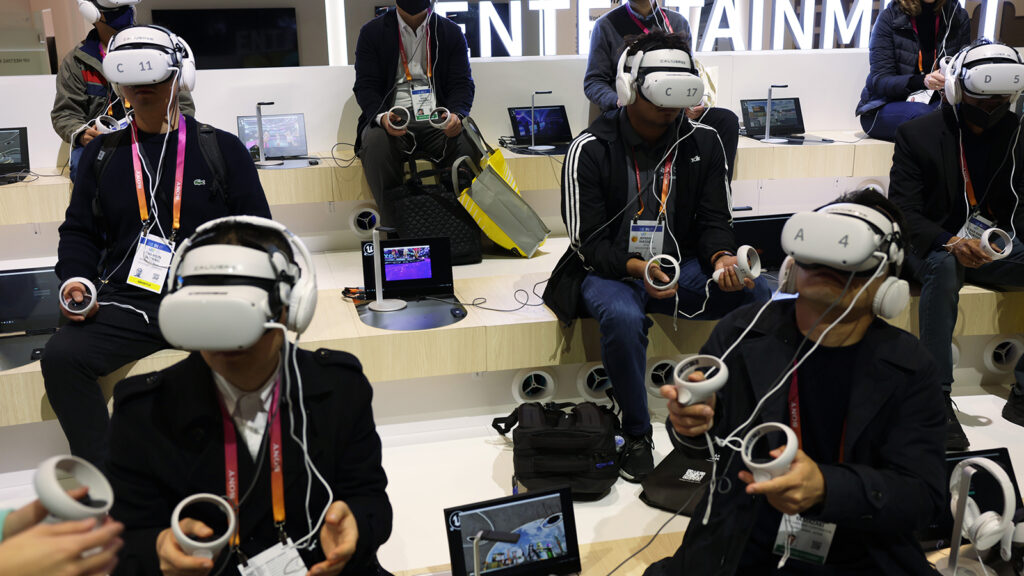
A worker walks past a robot used to transport materials at a recycling factory in Japan. Technologies such as 3D printing and automation are likely to decentralize manufacturing in the near future.
Photo: Kazuhiro Nogi/AFP/Getty Images
This is the second of a two-part conversation with Gary Gereffi, director of the Global Value Chain Center at Duke University, on the future of global supply chains. In the first piece, we looked at the impact that protectionism is having on global value chains. Today, we focus on the impact of technology and the changing U.S.-China relationship.
BRINK: You’ve talked about how we should be thinking of value chains and supply chains in regional rather than global terms. Why?
Gary Gereffi: In complex industries, no single country has the capabilities to produce all of the parts of a product. If you take something like an automobile that has about 20,000 parts, the most efficient industries are actually set up on a regional basis. For example, the U.S. automobile industry is really a North American industry, where U.S. companies are very tightly intertwined with suppliers in Mexico, Canada and even Central America to form a regional supply chain that can produce a very large share of the components needed.
If you look at the aerospace industry in Europe centered around Airbus, you find a similar pattern where European countries are coordinating their production for a very large proportion of the final product, because they can take advantage of proximity and cultural familiarity to deliver major segments of that supply chain.
If we take electronics—one of the most dynamic supply chains—China has been the leading exporter of most of Apple’s products for more than a decade, such as the iPhone, iPod and iPad. However, the inputs for that supply chain are coming from other Asian countries such as Japan, South Korea, Taiwan, Singapore and Malaysia. In that case, we have an East Asian electronics value chain, or even a smartphone value chain.
So even though we have a lot of cross-border trade, it tends to be coordinated and clustered in major geographic regions of the world, where the component suppliers are located in close proximity to the final goods assemblers. It really helps in terms of keeping transportation costs low and lead times short.
So geography continues to matter in terms of how these supply chains are organized, both within countries and between countries. In a few cases like pharmaceuticals, where there are active ingredients with relatively high value-to-volume ratios, the products can be made in locations around the world and shipped everywhere.
BRINK: How much is technology like blockchain going to change the nature of global value chains?
Mr. Gereffi: Blockchains make global value chains far more secure, so companies are investing quite a bit in the technology; blockchains help tremendously with financial transactions and maintaining data privacy. But equally important will be technologies like 3D manufacturing—a potential manufacturing paradigm shift—which will facilitate the decentralization of production.
The new world of production and distribution is far more technology-intensive than in the past.
3D printing could allow a reshoring in a lot of value chains. That’s a new pattern that we’re probably going to start to see as these advanced technologies make production more mobile, and decrease the labor costs of production. Industries can now be reorganized in ways where proximity to the consumer is going to be even more important than labor costs, which are falling throughout the chain as a result of automation.
BRINK: What impact is this having in China?
Mr. Gereffi: We tend to think of China as having an inexhaustible supply of low-wage as well as higher-skilled labor (engineers, computer programmers, software specialists and the like), but for various reasons, including China’s one-child policy, they are running into labor shortages, especially blue-collar workers in areas that have been industrial production centers in the past.
As a result, this new technology is going to be used to reconfigure value chains, where skills become more important than labor costs. A number of very large factories run by production specialists like Foxconn are undertaking large-scale automation to replace assembly-line workers with industrial robots.
A similar phenomenon is occurring with the United States and other advanced industrial economies: New industrial plants are being built that will utilize a much higher proportion of engineers and highly trained technicians relative to lesser-skilled blue-collar workers. According to recent reports, a Foxconn plant being built in Wisconsin might need to import workers from China, given a local shortage of high-skilled workers for that plant. Amazon’s decision to split its new U.S. headquarters search into two facilities instead of one reflects a similar dynamic: The new world of production and distribution is far more technology-intensive than in the past.
BRINK: How are these new dynamics impacting the U.S.-China relationship?
Mr. Gereffi: I think some people have been overplaying the idea that Trump is all about America first and is anti-trade as a result. To me, the recent agreement that he made between the U.S., Mexico and Canada shows he’s willing to strike trade agreements—if he thinks he can get a better deal. In the case of U.S.-China economic relations, the key issues have little to do with tariffs on trade in goods. That’s a 20th century model of how supply chains worked.
The battle between the U.S. and China is really about who’s going to control the technologies of the future, like blockchains, artificial intelligence, automation, electric vehicles and so forth. The United States and China are the two most advanced digital economies in the world, and each economy wants to position itself to better control innovation and value-capture in the digital economy. How the internet is regulated internationally in terms of issues like taxation and data privacy is likely to be a key issue, as well as whether China lowers the restrictions on internet access posed by the Great Firewall.
To me, tariffs are mainly a bargaining chip for the U.S. to try to figure out how to address much bigger strategic issues in the digital economy. There’s a lot going on beneath the surface in terms of the U.S.-China dispute that’s more strategic in nature.







